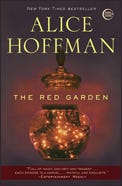The Red Garden is a collection of linked short stories and also genuinely a novel, each story breathing into the spaces of the others, turning them upside down, inside out, illuminating and casting shadows. It begins in 1750, with the founding of a town in the wilds of Massachusetts by a girl who has married in haste to escape her old life, and the tragedy of the boy who loves her like a mother and discovers, too late, who her heart yearns for. Yearning and love, especially the love of parents for children, bind the stories together through the generations into the present day.
Johnny Appleseed passes through, "swept up in something far bigger than himself," and plants a tree that becomes a town legend. Emily Dickinson strays in, falls in love, and plants a garden, "the flash of scarlet, the trail of blood, the inside story of who she was." Despite these intersections with recorded history, though, this is not a novel crafted around History writ large, but an intimate exploration of the strange yet familiar human failings, hopes and graces that fall by the wayside in one generation to ripen and bloom in another. Memories may lapse, wear thin, morph into legend, or be cherished so privately that a single person's death dissolves them. The truths behind them are as persistent as the eels in the Eel River and the ghost of a girl in blue.
Hoffman's prose is vivid, often lyrical, but without calling attention to itself at the story's expense. There's magical realism here, but in many tales the magical aura comes simply from the characters' experiences of desire and compassion, a kind of magic readers can recognize in their own lives.
When the red garden, "the garden, with soil so red it seemed to have a bloody, beating heart," finally gives up its secret, the novel comes full circle. Readers may be tempted to turn back to the first story and begin again. (2011; 270 pages)




